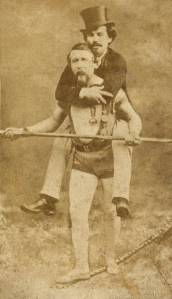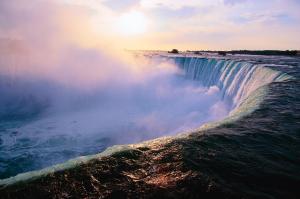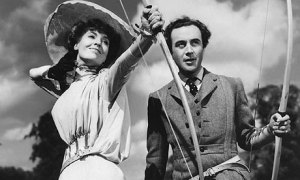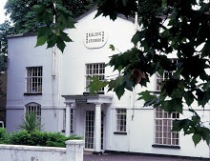If you find the prospect of walking the Niagara Falls by tightrope terrifying, imagine how you would feel strolling across the chasm blindfolded, while carrying a man on your shoulders or pushing a lion across in a wheelbarrow.
There were some of the capers carried out about Blondin, who thrilled audiences with his death-defying exploits a century ago.
In an amazing 60-year career The King of the High Rope performed to millions of people all over the world. Born in Hesdin, France, on 28 February, 1824, he was christened Jan Francois Gravalet, but was nicknamed Blondin by friends because of his blonde hair and piercing blue eyes.
But despite his French heritage, Blondin loved London and eventually adopted it as his home. He lived in St John’s Wood before moving to a house in Little Ealing, where he lived the life of a country gentleman until his death in 1897.
Blondin first got hooked on rope walking at the age of four after being inspired by a troupe of travelling acrobats. He was determined to be the greatest rope walker in the world.
After only six months of training he made his debut, aged five, and found instant fame as the Little Wonder. Blondin spent the next 20 years performing with France’s top troupes, but still craved international fame. He shocked the world when he crossed the Niagara Falls in 1859.
“Everyone thought I was crazy even to try,” said Blondin years later. “But I always knew I could do it.” On the morning of 30 June, 1859, he took five nerve-wracking minutes to reach the other bank, but not before several heart-stopping moments.
Half way across Blondin seemed to falter, then suddenly stopped. Very slowly he sat down and began looking round him. But after a short rest the great gymnast sprung to his feet, turned a backward somersault and strolled confidently to the Canadian side of the Falls.
“I don’t know what all the commotion’s about,” said Blondin coolly as he reached the other side. “I only stopped to admire the view.” Blondin then returned to the rope and performed tricks with a chair. Finally he grabbed a camera from a spectator and took photos of his fans standing on the banks. He was an international star, offers of work came from all over the world.
Blondin continued to make crossings of the Falls, introducing a new spectacular trick into every performance. After cycling across the Falls and walking the rope on stilts he would finish his shows by offering piggy-back rides to anyone who was brave enough to climb on to his shoulders. A more difficult challenge was to cook a meal in the middle of the Niagara Falls.
Determined not to be beaten, the great acrobat carried a stove into the middle of the tightrope and coolly cooked himself a cheese omelette.
To satisfy the huge crowds Blondin’s shows became more and more dangerous, and he nearly perished at Crystal Palace after a mistake by his assistant. During the finale of hos show Blondin walked into a blaze of fireworks, but as an assistant handed him a couple of rockets he accidentally dislodged the maestro, and Blondin slopped slipped from the rope.
For a fraction of a second the crowd thought their hero was dead, but somehow Blondin hooked a leg around the rope and hauled himself to safety. After making a fortune, he tried to retire in 1876, but could not live without the excitement and quickly made a comeback, performing until the end of his life.
After 60 years of performing Blondin died of diabetes on 22 February, 1897. He was buried in Kensal Green Cemetery alongside his wife. Although his house in Ealing is no longer standing, two roads – Blondin Avenue and Niagara Falls – mark its site. There is also a park named after the great man, Blondin Park in Northfields, with a community orchard, wildflower meadow, pond and nature area opened by his great great grandson.




